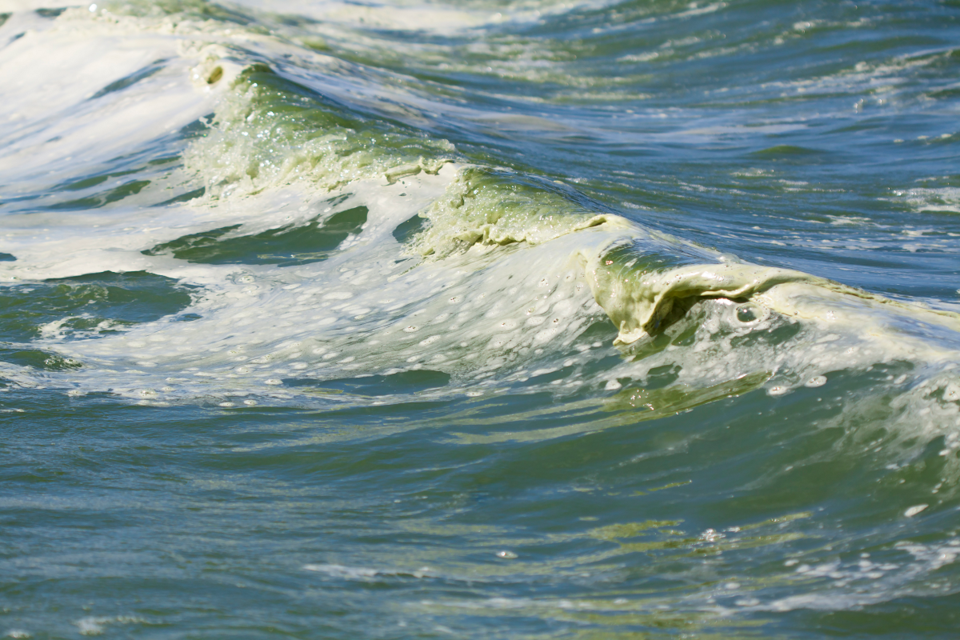REGINA ‑ With everyone returning to work and school, cabins winterized, boats back in storage and fishing rods tucked away, the water quality in Saskatchewan lakes and rivers may not be front of mind for many right now. But World Water Monitoring Day makes this the perfect time to think about, and take action for, all those freshwater places that are near and dear to our hearts.
WWMD is an international outreach program held annually between Sept. 18 and Oct. 18. By engaging communities in monitoring the condition of their local water bodies, WWMD helps increase awareness of the importance of good water quality to life, livelihoods and personal enjoyment.
Recent news headlines related to Saskatchewan’s water bodies read like a dystopian novel; increased incidence of harmful algae blooms, fish kills and technicolour water all tell a story of freshwater ecosystems that are in trouble.
Those who study these things tell us that there's been a pronounced and progressive decline in water quality levels in southern Saskatchewan over the past 15 years. And that warmer water temperatures resulting from climate change will only make matters worse.
Just how sick are our provincial water bodies? Turns out, we don’t really know. And we need to find out.
WWF-Canada recently reassessed the health of the country’s 25 watersheds and 167 sub-watersheds to get a handle on how they’re responding to threats from pollution, habitat loss and climate change. The resulting 2020 Watershed Reports revealed that a shocking 60 per cent of Canada’s sub-watersheds, including 13 in Saskatchewan, are data deficient. We simply don’t have enough information on these systems to assign a health rating.
Like the person who delays seeing a doctor until the eventual prognosis is dire, we need a solid diagnosis on the health of our freshwater ecosystems now, while we can still take meaningful action to address the challenges. This is where you come in.
Community-based water monitoring is a type of scientific data collection that empowers citizens and non-government organizations to design and implement community-based water monitoring programs. It operates on the belief local groups have unmatched insight into, and interest in, their waters and the issues facing them. If you’re one of the many Saskatchewan cottage owners who has observed subtle and not-so-subtle changes in your lake water over the years, you’ve witnessed a form of CBWM in action.
Through organizations like Water Rangers, you can participate in CBWM. Water Rangers is a Canadian non-profit organization that provides water test kits for citizen scientists and a digital platform for open sharing of water quality data. You conduct water sampling on a lake or river where you spend time and contribute results to larger datasets like those used in the WWF-Canada Watershed Reports. Across Saskatchewan, university researchers and watershed stewardship groups alike have seen value in CBWM and the Water Rangers approach and are making water test kits available to interested individuals and groups.
We need a better picture of the extent to which Saskatchewan’s freshwater ecosystems are stressed, what’s stressing them, and how best to act in their defence. While we may be at the mercy of hotter summers and extreme rainfall runoff events that stem from a changing climate, we can influence the introduction of troublesome nutrients, particularly nitrogen and phosphorus, which are at the centre of deteriorating water quality and algae blooms. Adopting new technology and changing fertilizer practises can help reduce this nutrient pollution.
And we have one more often-overlooked ally in our efforts: wetlands.
Across the country, Ducks Unlimited Canada is undertaking research on how wetlands work to absorb and break down nutrients, resulting in water that is cleaner leaving than entering a wetland basin. Results show wetland restoration can help improve water quality and reduce algae blooms downstream. Conserving and restoring wetlands on Saskatchewan’s landscape is key to ensuring healthy freshwater ecosystems and watersheds into the future.
Another upside to CBWM is what Water Rangers calls the “transformative power of testing.” When people learn about, then test water, they are prompted to take action to protect it. It’s that connection to special Saskatchewan places – the site of your family cabin, the shoreline where you camp with the grandkids each summer, or the lake you visit for your annual fishing trip – that are key to our understanding of water bodies. And to the care and concern we dedicate to keeping them well.



